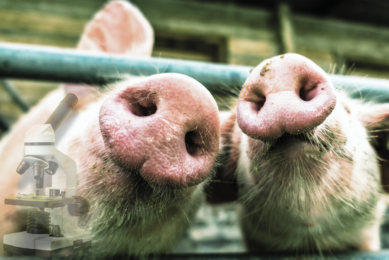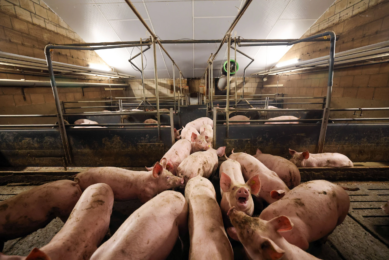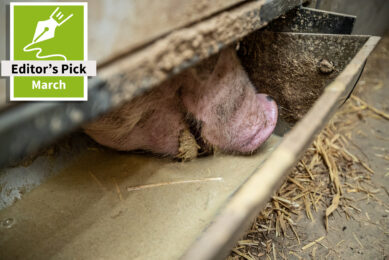Mycotoxins in pigs
Feed that is contaminated with mycotoxins is a serious risk for pig producers. A pig that has consumed aflatoxins does not exhibit characteristic clinical signs. Symptoms may include feed refusal, reduced growth, paleness and jaundice. The latter is an indication of liver damage which may occur at levels above 100 ppb in the feed. Feed refusal may be observed at levels as low as 20 ppb, depending on the variety of aflotoxin. Symptoms of fumonisin poisoning may be observed at levels above 10 ppm and include pulmonary edema and liver damage.
Pigs are more sensitive to Trichothecens than other farm animals, with levels as low as 300 to 500 ppb resulting in feed refusal, decreased weight gain and increased vulnerability to infectious diseases. The trichothecens include deoxynivalenol (DON), also known as vomitoxin because of its strong vomiting effect. At levels over 1 ppm, severe weight loss and vomiting occur. Weaner pigs are especially susceptible. Recent research suggests that male pigs may be more tolerant than females. Effects on reproduction are unknown, but it is best to avoid feeding breeding animals infected grain. T-2 is a very potent tricothecen, found in barley and wheat, which can seriously impair fertility in swine.
Ochratoxin A in pigs produces depressed appetite and reduced growth rate. At concentrations greater than 5 to 10 ppm, a number of conditions may arise such as impaired kidney function, necrosis of lymph nodes and fatty liver changes.
Zearalenone is probably the mycotoxin most detrimental to swine with serious effects on the breeding stock. Prepubertal gilts are most sensitive. Toxicity results in the reddening and swelling of the vulva, increased size of mammary tissue, straining with subsequent rectal and vaginal prolapse, as well as pseudopregnancy and false heat. The piglets of affected sows may experience depressed piglet growth in utero, early embryonic mortality and be born with splayed legs. Fertility problems surface at 100 to 200 ppb. Zearalenone also produces swelling of the prepuce in boars.
See also:











